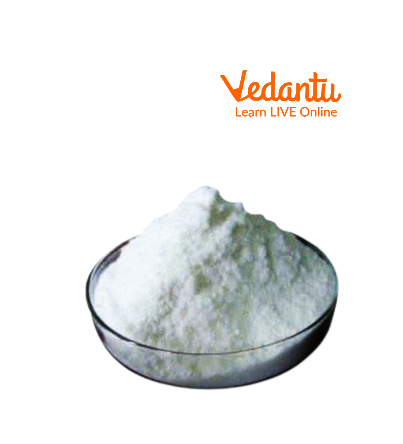




A Brief Introduction to Azide Group
Sodium azide is used as a chemical preservative in hospitals and laboratories. An organic azide is an organic compound containing the azide (N3) functional group. Because of the hazards associated with their use, few azides are used commercially although they exhibit interesting reactivity for researchers. Some inorganic azides and alkyl azides are used as initiating explosives in detonators and percussion caps.

Ionic Structure for Sodium Azide
What is Azide Group?
An organic azide group is an organic compound containing the chemical compound (N3) as a functional group. Owing to the hazards related to their use, few azides are used commercially though they exhibit attention-grabbing reactivity for researchers.
For example Compounds, R-N3 is named Phenyl azide when R is a phenyl group, in radicofunctional terminology, by putting the word "azide" after the name of the radical R . In ( Azidobenzene ), in substitutive nomenclature, by adding the prefix "azido-" to the name of the compound RH.

Azido Benzene
Synthesis of Sodium Azide
Sodium azide is an ionic compound. The NaN3 compounds are very soluble in water. These solutions contain some quantity of hydrogen azide as shown within the following chemical equation:
The sodium azide is present in the form of a white solid.

Sodium Azide
Preparation
The common synthesis technique used is the "Wislicenus method," which takes place in 2 steps from ammonia. in the beginning, ammonia is converted to metal
The NaNH2 reacts with nitrous oxide.
Alternatively, the salt is obtained by the reaction of nitrate with metal NaNH2.
Reactions of Sodium Azide
Treating sodium azide with sturdy acids provides hydrazoic acid as a product:
Sodium azide doesn't soften however decomposes smartly to Na metal and N gas at approximately 300 °C. An electrical charge triggered by automobile impact heats the salt to explosively unleash N gas within the airbag:
In the above reaction, the formed shape may be a hazard itself. In automobile airbags, it's converted by reaction with alternative ingredients, like KNO3and SiO2, into an inert alkaline salt 'glass'.
Sodium azide is destroyed by treatment with acidic sodium nitrite resolution.
Sodium azide is employed in organic synthesis to introduce the azide functional group by displacement of a salt.
Biochemical Uses of Sodium Azide
Sodium azide may be a helpful probe chemical agent and preservative. In hospitals and laboratories, it's a biocide; it's particularly vital in bulk reagents and stock solutions which can otherwise support microorganism growth where the sodium azide acts as a bacteriostatic by inhibiting hemoprotein enzyme in gram-negative bacteria; gram-positive (streptococci, pneumococci, lactobacilli) are resistant. it's additionally used in agriculture (farming) for pest management.
Azide inhibits hemoprotein enzyme by binding irreversibly to the haem cofactor in a very similar method almost like the action of CO(Carbon monoxide). sodium azide significantly affects organs that endure high rates of respiration, like the heart and also the brain.
Toxic Effects
Sodium azide is usually comparable to cyanide, as they provide similar symptoms. Exposure to sodium azide has some or all of the subsequent symptoms within minutes: fast respiration, restlessness, dizziness, weakness, headache, nausea, vomit, fast pulse, red eyes (gas or mud exposure), clear drainage from the nose, cough, skin burns, and blisters (explosion or direct skin contact. Exposure to a high amount of Na azide could cause these alternative health effects as well: convulsions, low blood pressure, low pulse, loss of consciousness, and respiratory organ injury, respiratory failure resulting in death.
Interesting Facts
Sodium azide could be a rapidly acting, deadly chemical that exists as an odorless white solid.
When it's mixed with water or acid, Sodium azide changes quickly to a poisonous gas with a pungent (sharp) odor.
The odor of the gas might not be sharp enough, however, to provide individuals sufficient warning of the danger.
Important Questions
1. Why NaN3 compound is used in airbags?
Ans. Crashes trip sensors in cars that send an electrical signal to an ignitor. the heat generated causes sodium azide to decompose into Na metal and N gas, which inflates the car's airbags. under normal circumstances, this molecule is kind of stable.
2. Azides are acid sensitive or not?
Ans. heavy metal azide salts tend to be extremely heat and shock-sensitive explosives. Avoid water and robust acids which might cause the formation of hydrogen azide, which is very poisonous, volatile, and explosive.
Summary
Azide is the ion with the formula N-3. Sodium azide is the compound with the formula NaN3. This colorless salt is the gas-forming element in legacy automobile airbag systems. NaN3 is present as a colorless crystalline solid. Its density is 1.85 g / cm3. It causes burns within the air and may explode if high quantities are involved. It's harmful if consumed. Sodium azide is often used as a bacteriostatic preservative for biological samples.
FAQs on Sodium Azide
1. Why are azides explosive?
Azidoazide chemical compound is the most explosive compound ever created. It's a part of a category of chemicals called high-nitrogen energetic materials, and it gets its "bang" from the fourteen N atoms that compose it in a very loosely bound state. This material is both extremely reactive and extremely explosive. It is so sensitive, that it'll explode in nearly any scenario—even once left fully alone. Whereas different azides have their uses in making explosives and aiding medicine - NaN3, for instance, plays a role in the world of medical devices—azido azide compound is entirely the realm of experimental chemistry.
2. Where Sodium azide is found?
Sodium azide is best called the chemical found in automobile airbags. An electrical charge triggered by automobile impact causes Sodium azide to explode and convert to N gas within the airbag. Sodium azide is used as a chemical preservative in hospitals and laboratories. Accidents have occurred in these settings. In one case, Na azide was poured into a drain, where it exploded and therefore the deadly gas was inhaled (breathed in). Sodium azide is employed in agriculture (farming) for pests. Sodium azide is additionally employed in detonators and different explosives.
3. Is sodium azide heat sensitive and where is it stored?
The danger related to Na azide is its ability to form explosive azides once reacted with compounds of heavy metals like lead, copper, zinc, cadmium, or nickel. These compounds, as well as some organic azides, are notoriously heat and shock-sensitive and may explosively decompose with very little input of external energy. Store Na azide in a cool, dry space far from heat and open flames. Avoid contact with metal shelves or containers. Avoid contact with acids, water, and hydrogenated carbons.












